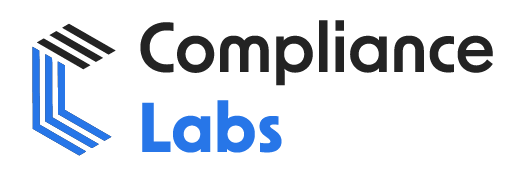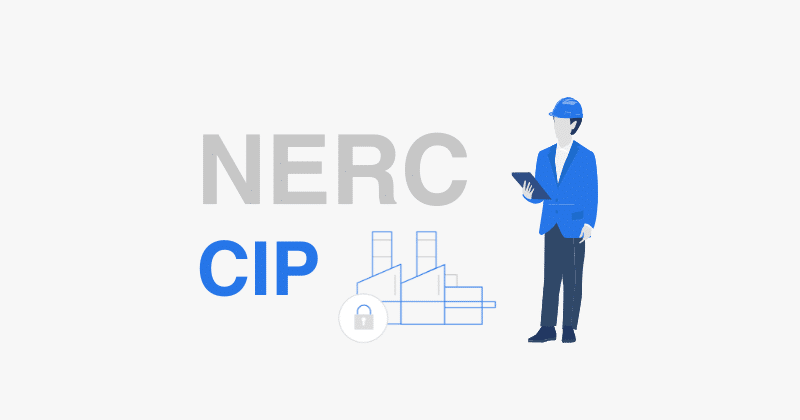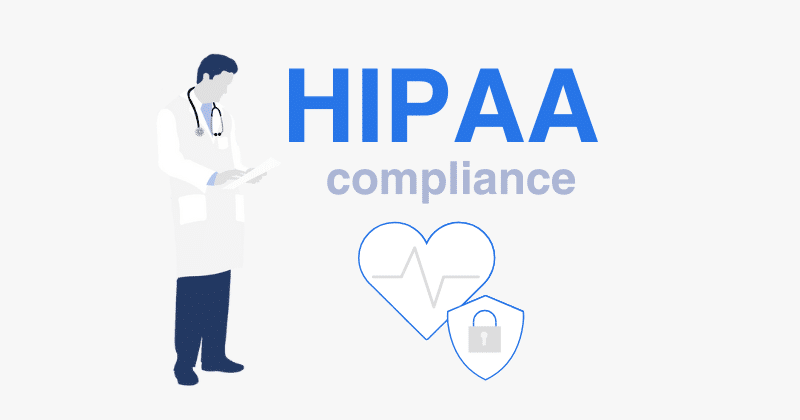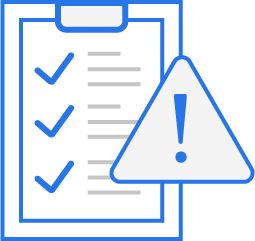In today’s ever-evolving threat landscape, think of your organization as a fortress under constant siege. Just like a medieval castle needs multiple layers of defense to withstand attacks, you need a multi-layered approach to boost your security. Cyberattacks are becoming more sophisticated, meaning simply locking the front door isn’t enough anymore. Protecting sensitive information and ensuring business continuity requires a comprehensive strategy that goes beyond traditional security measures. This means fortifying your defenses with robust access controls like Two-Factor Authentication (2FA), implementing Data Loss Prevention (DLP) mechanisms, and maintaining comprehensive asset monitoring. Therefore, companies need new strategies and technologies to truly boost your security.
Think of it like this: 2FA is like having a bouncer at the door verifying IDs, DLP is like having guards patrolling the castle walls to prevent leaks, and asset monitoring is like having a map that shows you everything within your walls so nothing goes unnoticed.
The Growing Cybersecurity Challenge: It’s Not If, But When
Cybersecurity threats aren’t just a technical problem; they are a business problem. Data breaches can lead to significant financial losses, reputational damage, and legal liabilities. Ransomware attacks, phishing campaigns, and insider threats continually plague organizations. It feels like we’re in a constant game of “whack-a-mole,” where we knock one threat down, and another pops up!
According to IBM’s 2024 Cost of a Data Breach Report, the global average cost of a data breach was $4.88 million. This makes effective cybersecurity measures not just a best practice, but a crucial business imperative. Therefore, organizations need robust strategies in place to protect their digital assets. Are your security measures enough?
Two-Factor Authentication: The Enhanced First Line of Defense (Like Wearing a Seatbelt)
Two-Factor Authentication (2FA) adds an extra layer of security to the login process. It requires users to provide two different authentication factors, drastically reducing the risk of unauthorized access, even if a password is compromised.
Think of 2FA like wearing a seatbelt in your car. It might be a little inconvenient, but it could save your life (or, in this case, your data!)
Why 2FA is Crucial: Passwords Alone Are No Longer Enough
Passwords alone are no longer sufficient due to phishing attacks, password reuse, and weak password practices. 2FA significantly increases the difficulty for attackers to gain access.
How 2FA Works: It’s All About Adding Extra Verification
2FA generally adds another form of authentication to the username and password login step. Authentication is typically handled by something you have (a physical factor) that you can use as another measure to confirm login.
-
Something You Know: Your password, PIN, or security questions.
-
Something You Have: A code from an authenticator app (Google Authenticator, Authy), a security key (YubiKey), or a one-time password sent via SMS.
-
Something You Are: Biometrics, such as fingerprint or facial recognition (less commonly used in enterprise settings, but gaining traction).
Benefits of 2FA: The Upsides Are Clear
-
Reduced Risk of Account Takeover: Significantly harder for attackers to compromise accounts.
-
Compliance Requirements: Often mandated by regulatory frameworks like PCI DSS, HIPAA, and GDPR.
-
Increased Trust and Confidence: Demonstrates a commitment to security, enhancing trust with customers and stakeholders.
2FA Best Practices: Making Sure You’re Doing It Right
-
Train Users: Educate employees on the importance of 2FA and how to use it properly. For instance, you can hold simulated phishing training and reward employees for using 2FA.
-
Choose Strong Authentication Methods: Authenticator apps or security keys are more secure than SMS-based codes.
-
Implement Across All Systems: Ensure 2FA is enforced for all critical systems, not just a few.
-
Backup and Recovery: Provide users with backup codes or alternative methods to access their accounts if they lose their primary authentication device.
-
Regular Audits: Conduct regular audits to ensure 2FA is properly implemented and enforced.
Implement 2FA across all critical systems and accounts, including email, VPN, cloud services, and administrative access.
Data Loss Prevention: Protecting Sensitive Data From All Angles (Like a Strong Safe)
Data Loss Prevention (DLP) involves implementing policies, procedures, and technologies to prevent sensitive data from leaving your organization’s control. Think of DLP as a really strong safe for your most valuable information! A solid DLP strategy is crucial for regulatory compliance and reputational security. Therefore, the success of your DLP relies on the implementation and continuous application of policies.
Why DLP is Essential: Avoiding Costly Mistakes
Data breaches can result in severe penalties under regulations like GDPR, HIPAA, and CCPA. DLP helps organizations prevent both accidental and malicious data leaks. It’s like having an alarm system to alert you to potential threats!
Data-Centric Security: Protecting Data at Every Stage
The focus on protecting data at all stages helps organizations understand the security posture and encourage effective processes. DLP must be applied to the following scenarios:
-
Data in use: (e.g., restricting access to a web application)
-
Data in motion: (e.g., email or file transfers)
-
Data at rest: (e.g., data stored on local hard drives, in databases)
Key Components of a DLP Strategy: Putting the Pieces Together
-
Data Discovery and Classification: Identify and categorize sensitive data based on its nature and location. Use advanced techniques such as pattern matching, keyword analysis, and data fingerprinting.
-
Policy Enforcement: Implement rules to control how data is used, stored, and transferred. Automate policy enforcement as much as possible. It reduces the risk of human error.
-
Monitoring and Reporting: Track data movements and alert on policy violations. Use real-time monitoring and analytics to detect unusual data activity.
-
Endpoint DLP: Control data on user devices (laptops, smartphones). Employ encryption, access controls, and removable media restrictions.
-
Network DLP: Monitor data transmitted over the network. Block or quarantine sensitive data transfers that violate policies.
-
Cloud DLP: Protect data stored in cloud services (e.g., AWS, Azure, Google Cloud). Use cloud-native DLP tools or third-party solutions integrated with your cloud environment.
Benefits of DLP: What’s In It For You
-
Regulatory Compliance: Helps meet requirements of GDPR, HIPAA, CCPA, and other data protection laws.
-
Intellectual Property Protection: Prevents unauthorized disclosure of trade secrets, patents, and other valuable IP. Consider watermarking sensitive documents to track their source.
-
Reputational Preservation: Minimizes the risk of data breaches that can damage your brand’s reputation. Implement robust incident response procedures. It ensures that any breaches are quickly contained.
Common Mistakes with DLP: Avoiding the Pitfalls
-
Lack of User Buy-In: Users need to understand and support DLP policies for them to be effective.
-
Overly Complex Policies: Simplify policies so they are easy to understand and follow.
-
Poor Data Classification: Accurate data classification is crucial for effective DLP.
-
Neglecting Cloud Environments: Ensure your DLP strategy extends to cloud services and applications.
Case Example: A financial institution implemented a DLP solution that automatically encrypted sensitive customer data being sent in emails. This prevented a potential data breach when an employee accidentally sent an email to the wrong recipient.
Conduct a data discovery assessment to identify sensitive data within your organization, and focus on quick ways that can make a difference in your cyber security posture today.
Asset Monitoring: Mastering Total Visibility for Enhanced Security (Like Knowing Every Room in Your House)
Asset monitoring involves continuously tracking and managing all hardware and software assets within your organization’s network. Think of it like knowing every room and closet in your house! This visibility is vital for identifying vulnerabilities, detecting unauthorized devices, and enforcing security policies. Therefore, for a stronger and effective security, your security posture needs to be clear for all assets.
Why Asset Monitoring is Critical: Spotting Hidden Dangers
Unknown or unmanaged assets can become entry points for attackers, leading to breaches and data theft. In fact, a study by Ponemon Institute found that organizations with poor asset visibility experience significantly higher breach costs. Furthermore, asset monitoring gives real-time visibility into the company’s attack surface.
Key Elements of Asset Monitoring: Knowing What You Have
-
Automated Discovery: Use tools to automatically identify all devices, software, and cloud instances connected to the network.
-
Inventory Management: Maintain a detailed inventory of assets, including hardware specifications, software versions, security configurations, and ownership details.
-
Vulnerability Scanning: Regularly scan assets for known vulnerabilities and misconfigurations. Integrate vulnerability scanning with your patch management process.
-
Endpoint Detection and Response (EDR): Monitor endpoint activity for suspicious behavior and respond to threats in real time. EDR provides real-time monitoring of device activities.
-
Network Access Control (NAC): Enforce security policies and restrict access based on asset compliance status. Implement segmentation to isolate compromised assets.
Benefits of Asset Monitoring: Gaining the Advantage
-
Improved Security Posture: Reduces the attack surface by identifying and managing all assets. Continuous monitoring supports proactive threat detection and management.
-
Compliance Enforcement: Supports compliance with regulations like PCI DSS, HIPAA, and NIST CSF, which require detailed asset inventories.
-
Efficient Incident Response: Provides the visibility needed to quickly identify, isolate, and respond to security incidents. Reduces the time needed to mitigate security threats.
Additional Strategies for Comprehensive Visibility: Seeing the Whole Picture
-
Network Segmentation: Dividing the network into segmented zones limits lateral movement for attackers, while also making asset monitoring simpler within each zone.
-
Change Management: Track and manage hardware and software changes to monitor how the environment changes, helping to minimize the addition of new assets without full inspection and validation.
-
Regular Audits: Performing internal audits to evaluate asset monitoring and security controls helps to detect gaps. Compliance audits help make sure policies are effective.
Case Example: A healthcare provider implemented continuous asset monitoring and discovered several unauthorized medical devices connected to their network. They addressed this by implementing a NAC solution to isolate those devices and perform a full security assessment.
Implement an automated asset discovery tool to identify all hardware and software assets on your network.
Addressing Emerging Threats: The Role of AI and Zero Trust
As the cybersecurity landscape evolves, organizations must adapt their security strategies to address new threats and technologies.
-
Generative AI: Both a threat and a potential security tool. Malicious actors are using AI to create more sophisticated phishing emails and malware. Organizations can leverage AI-powered security tools to detect and respond to these threats more quickly.
-
Zero Trust: A security model based on the principle of “never trust, always verify.” It assumes that threats can come from both inside and outside the network. It implements strict access controls, continuous authentication, and micro-segmentation. Think of it as having multiple checkpoints throughout your fortress, verifying everyone’s identity at each step.
Therefore, implement a Zero Trust Architecture framework to boost your security, with the right tools and strategies, you can create a more secure and resilient environment. This allows your business to thrive without the constant fear of cyberattacks.
So, is your company ready to boost your security? Contact us to make a start today.






